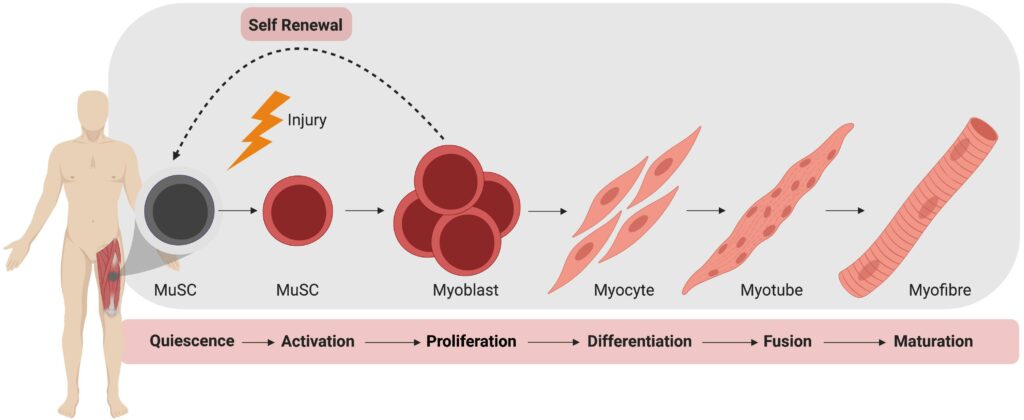How do myoblasts differentiate into muscle cells
October 13, 2023
Myoblasts are progenitor cells that play a crucial role in the development and maintenance of skeletal muscle tissues. During myogenesis, which is the formation of skeletal muscular tissue, myoblasts differentiate into myocytes (muscle cells) and fuse to form long cylindrical multinucleated skeletal muscle fibers called myotubes. This process is regulated by the expression of specific genes and the presence of growth factors. Myoblasts are characterized by their small, mononucleated nature with a high nucleus-to-cytoplasm ratio. They have a high capacity for myogenic differentiation and are responsible for mediating muscle growth and repair. Myoblasts are derived from somites during embryonic development and primarily from satellite cells, which are stem cells residing in skeletal muscle tissues, in adults. The differentiation of myoblasts into muscle cells is a fundamental process essential to the development and maintenance of skeletal muscle tissues.
- Interleukin-6 (IL-6): IL-6 has been shown to induce myogenic differentiation via JAK2-STAT3 signaling in both mouse C2C12 myoblast cell line and primary human myoblasts
- Activin A: Pro-inflammatory cytokines such as IL-1α and TNF-α have been found to inhibit the differentiation of human myoblasts by increasing levels of Activin A, which in turn blocks myoblast differentiation
- TGF-β Family Members: Members of the TGF-β family, such as myostatin and Activin A, have been reported to block myoblast differentiation, and their induction downstream of cytokine pathway stimulation can perturb muscle differentiation
These cytokines play a significant role in modulating the differentiation of myoblasts into mature muscle cells and are involved in the regulation of various signaling cascades during this process.


